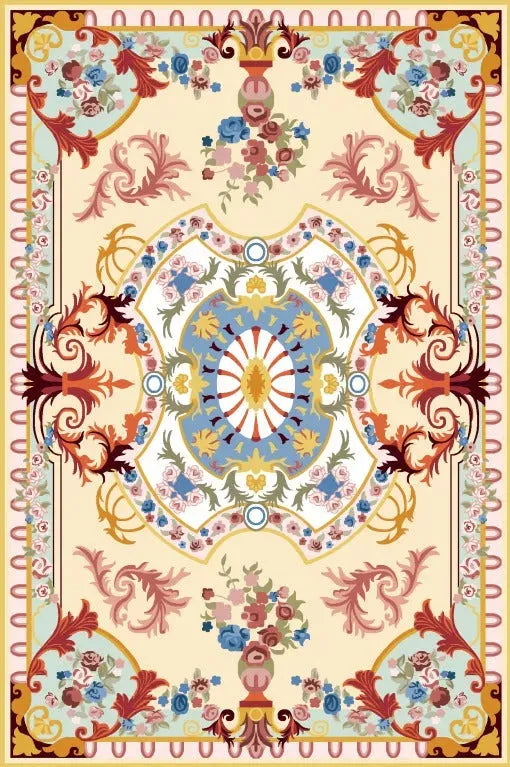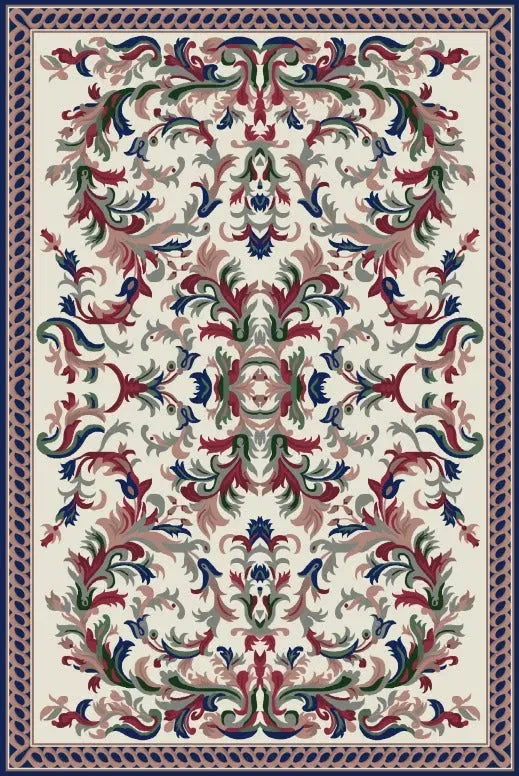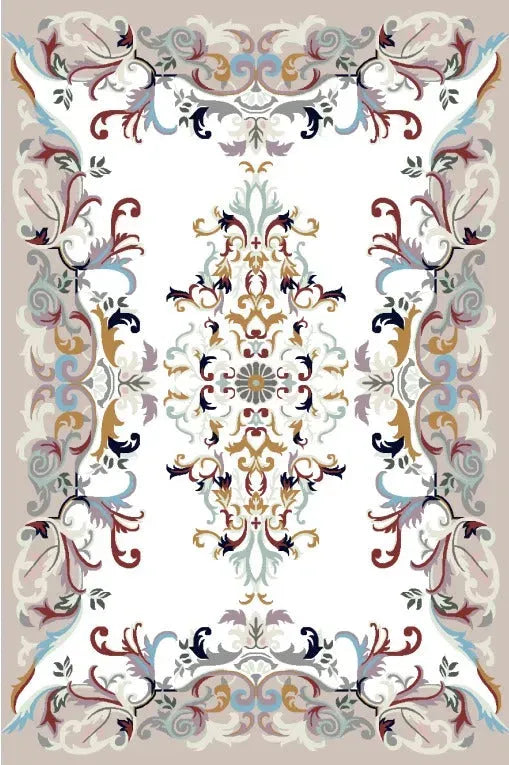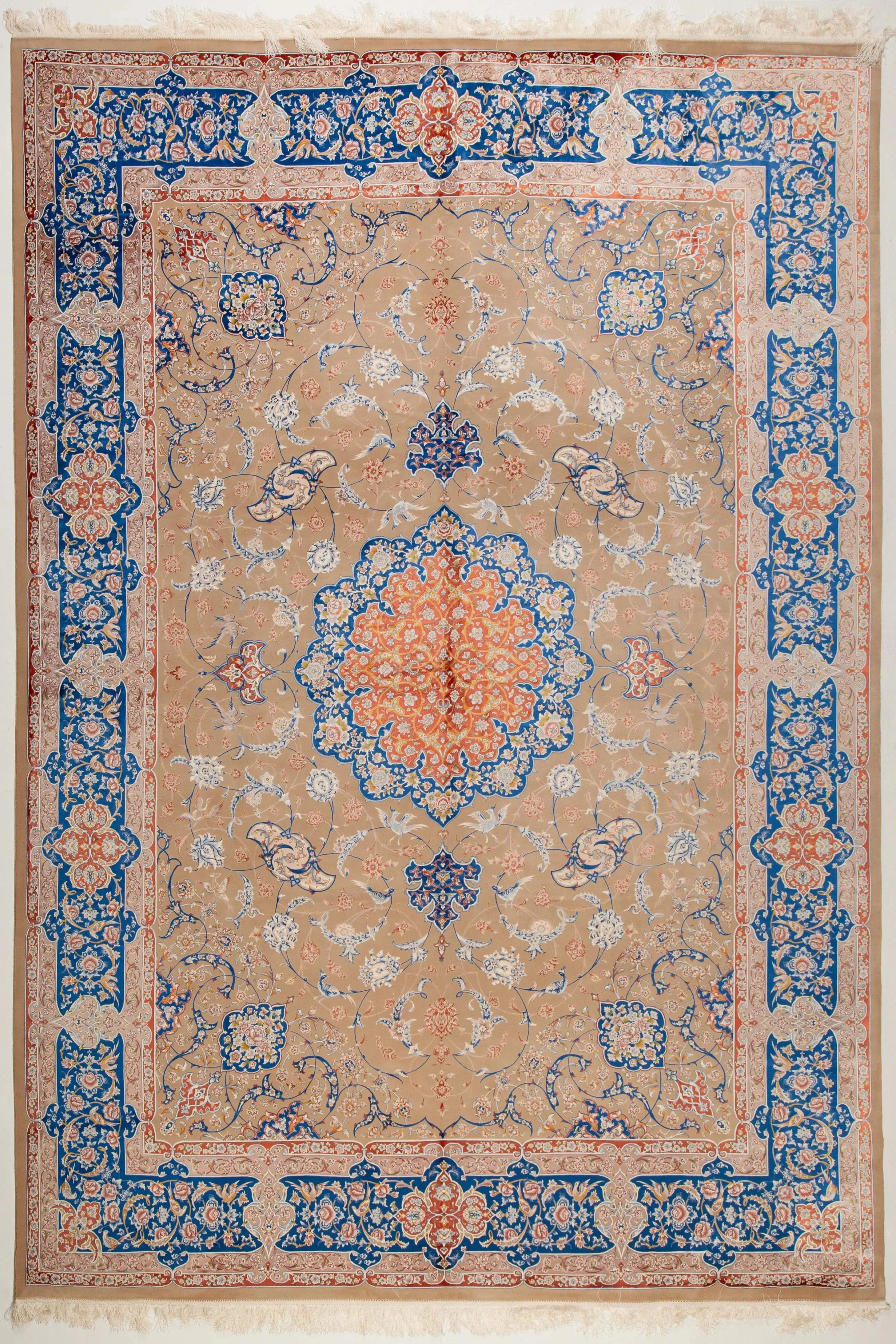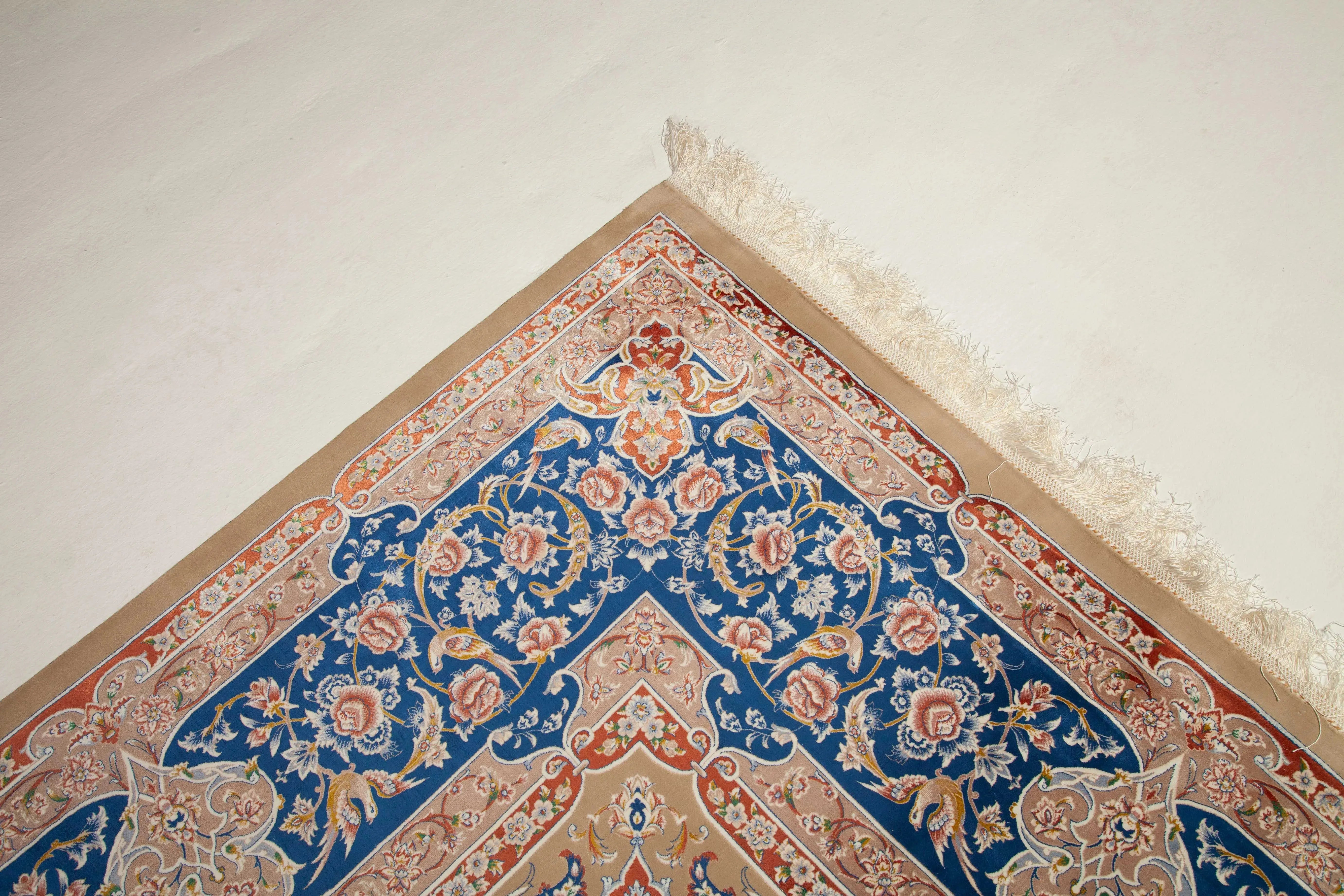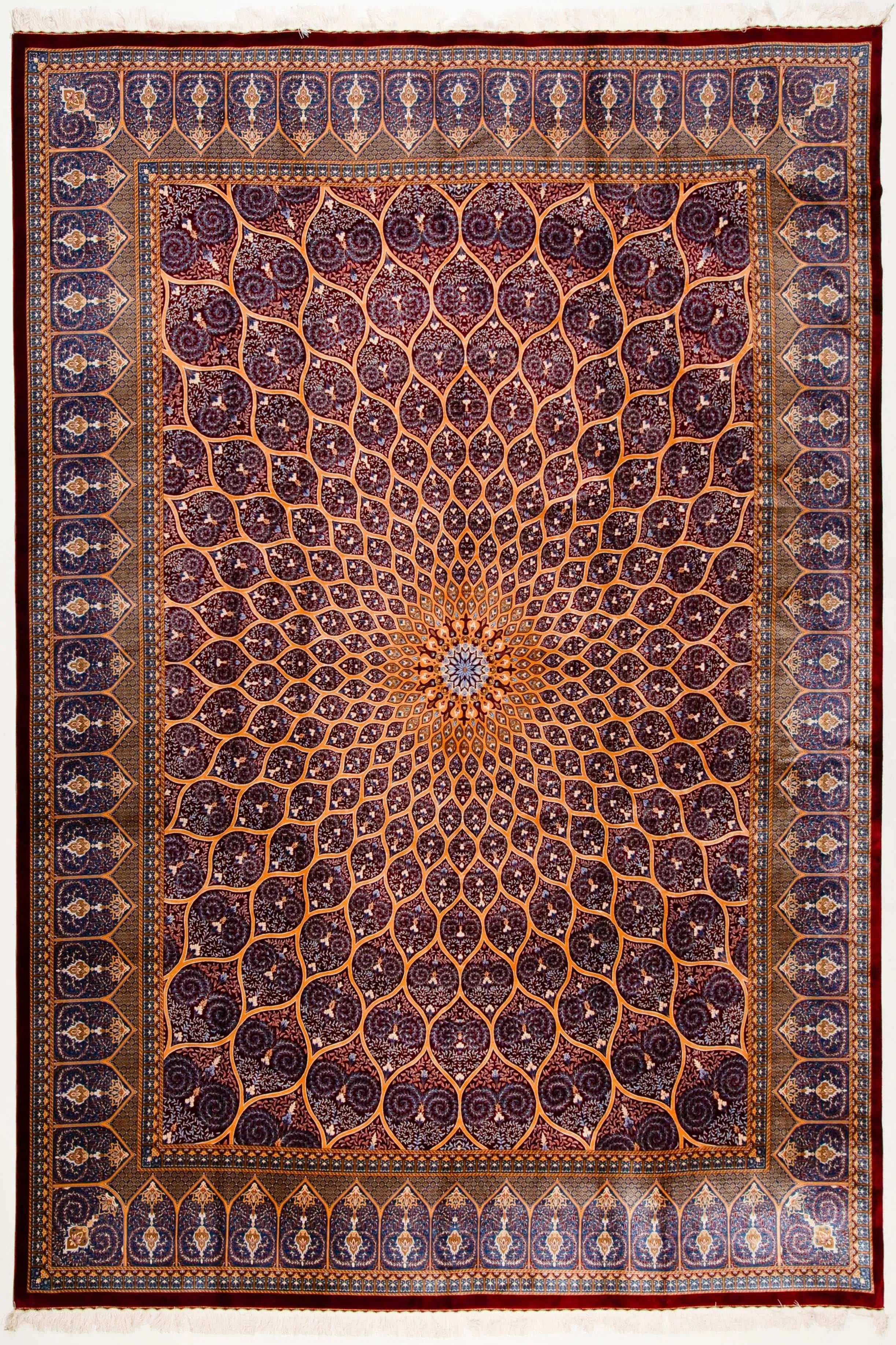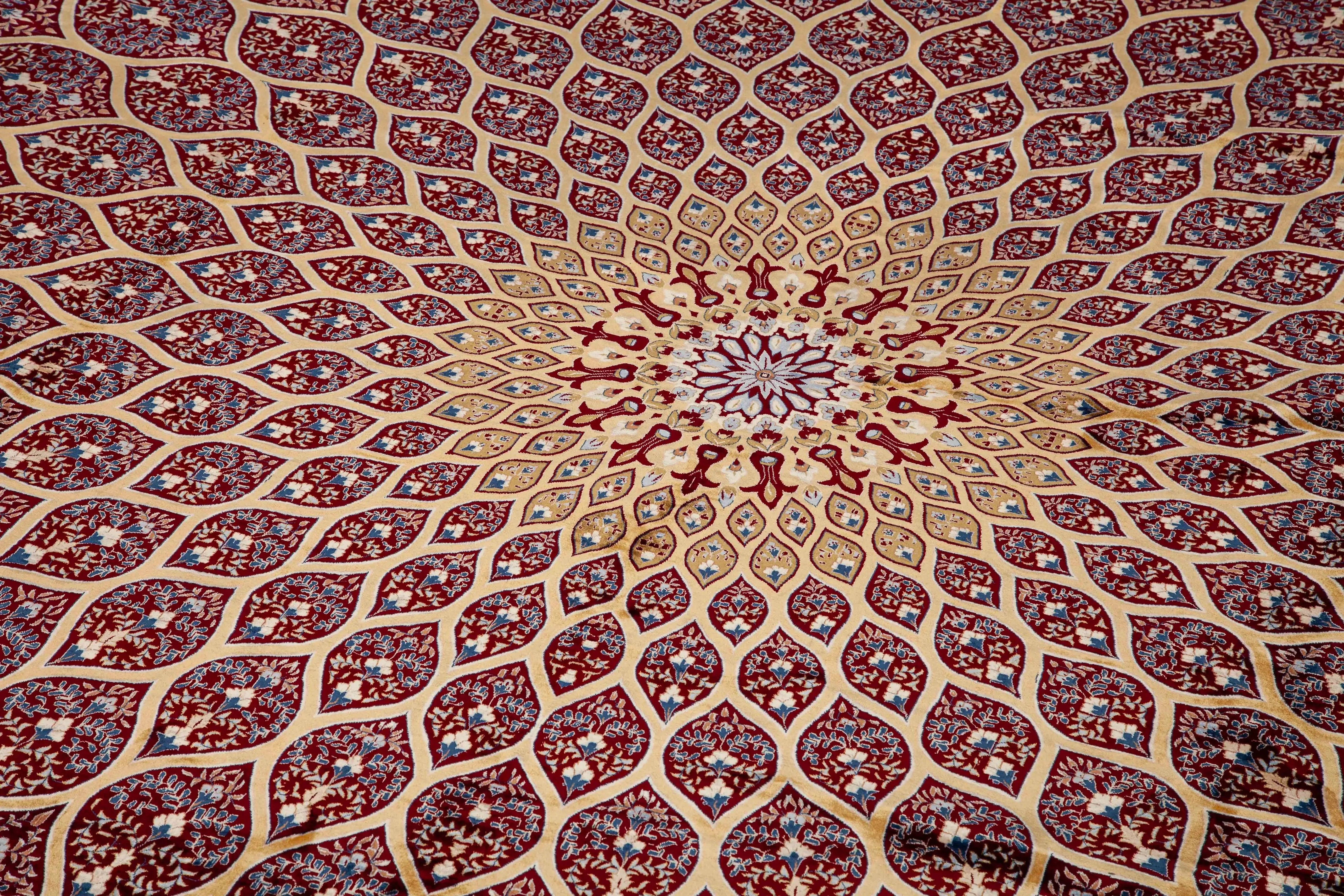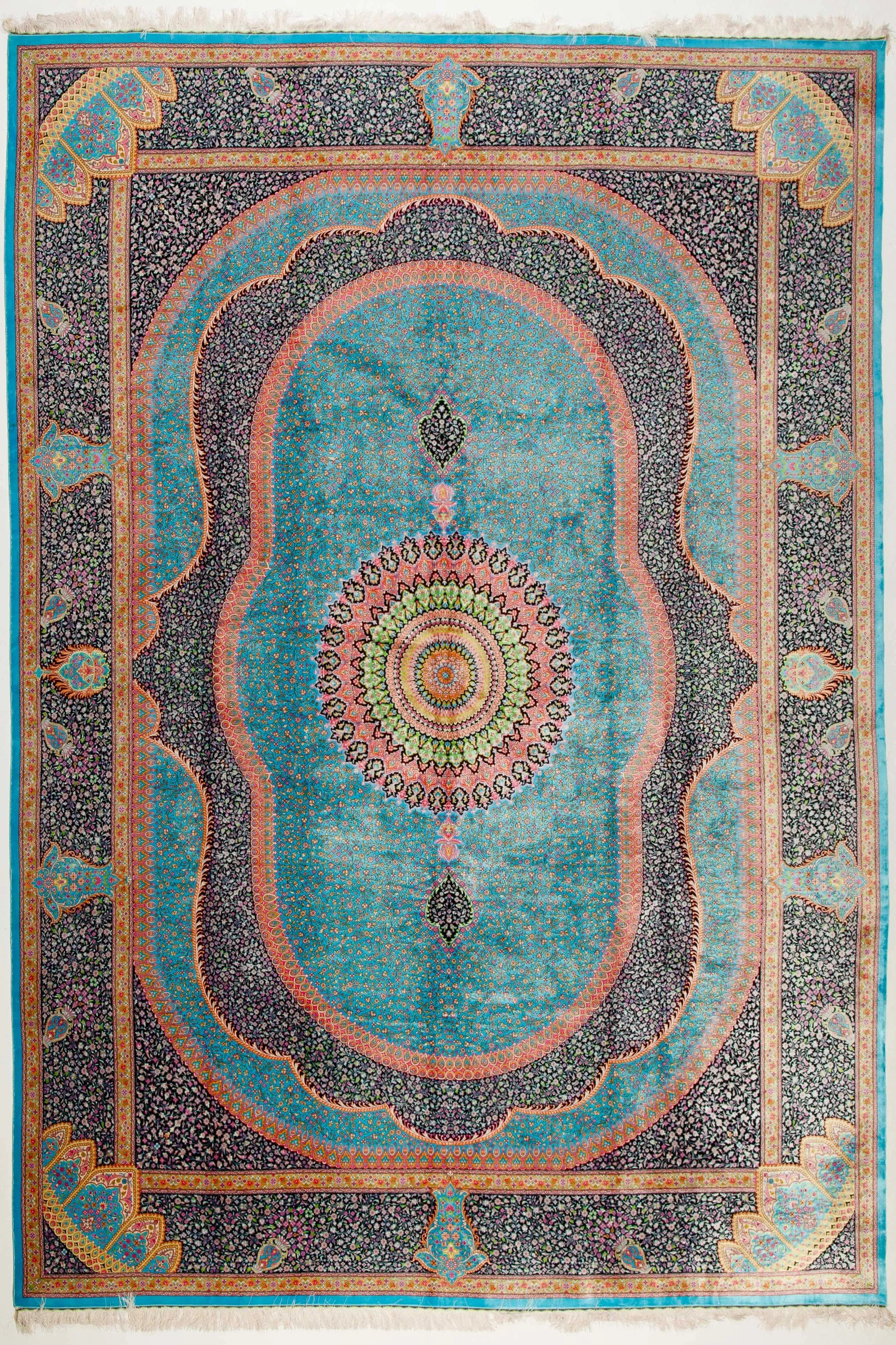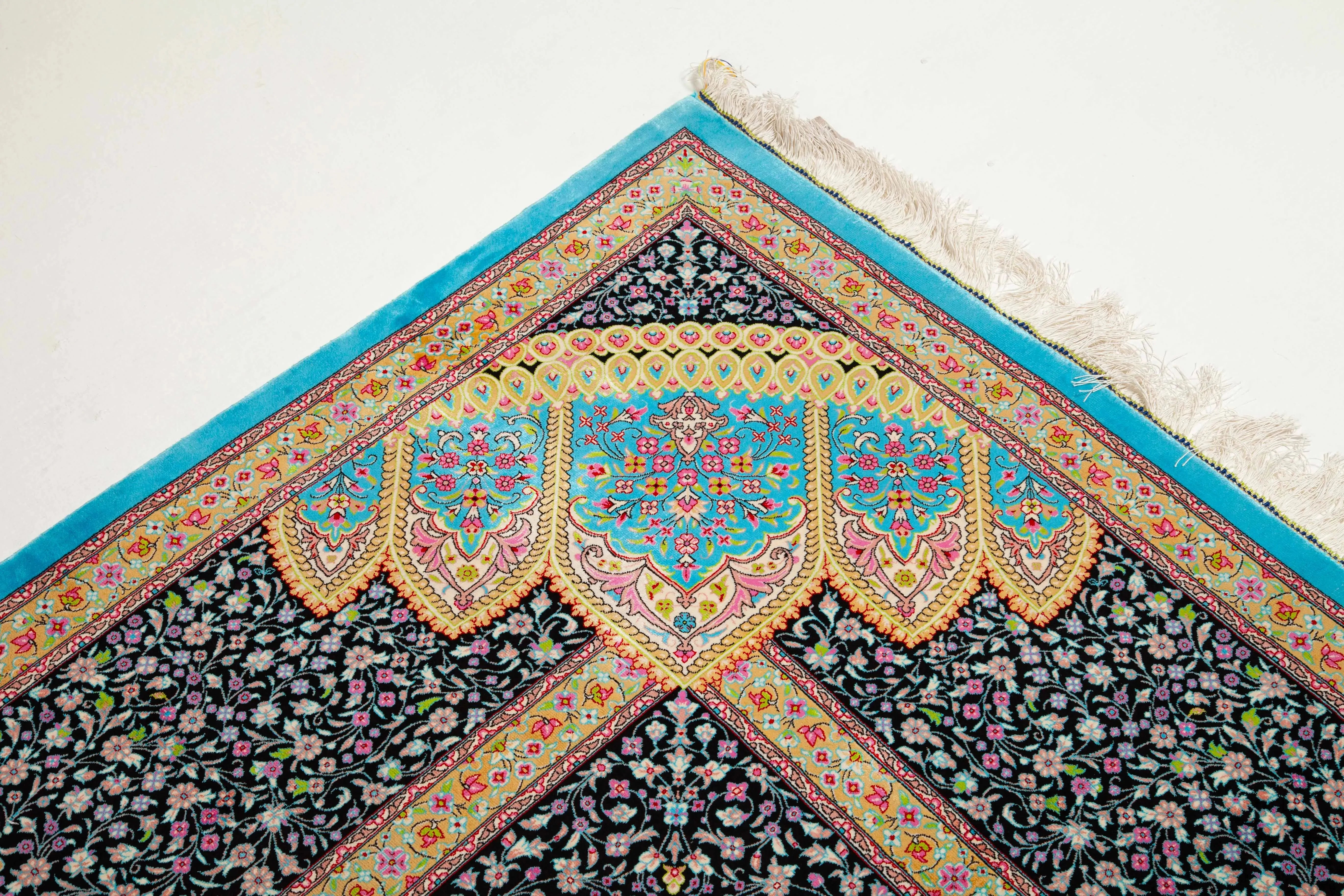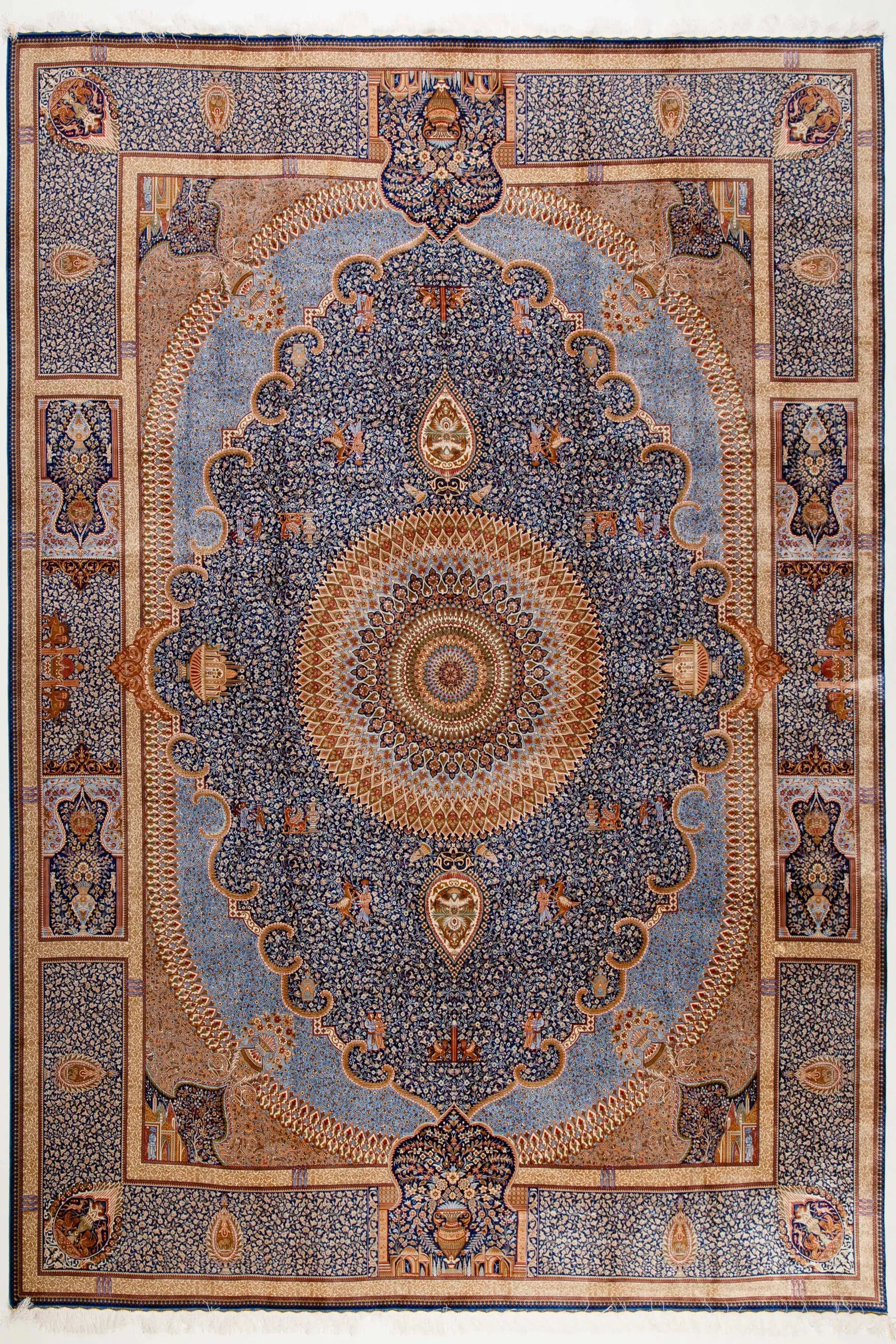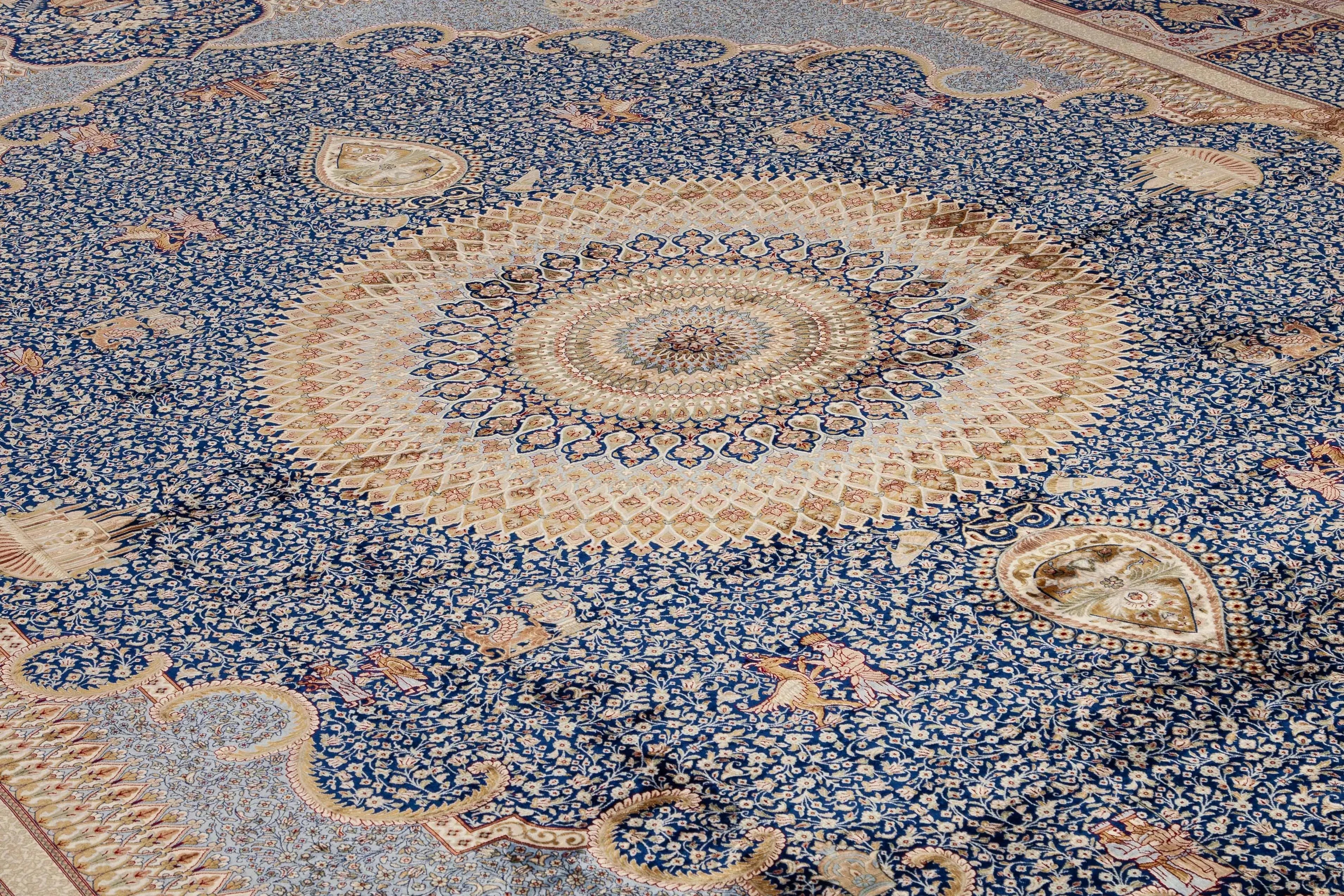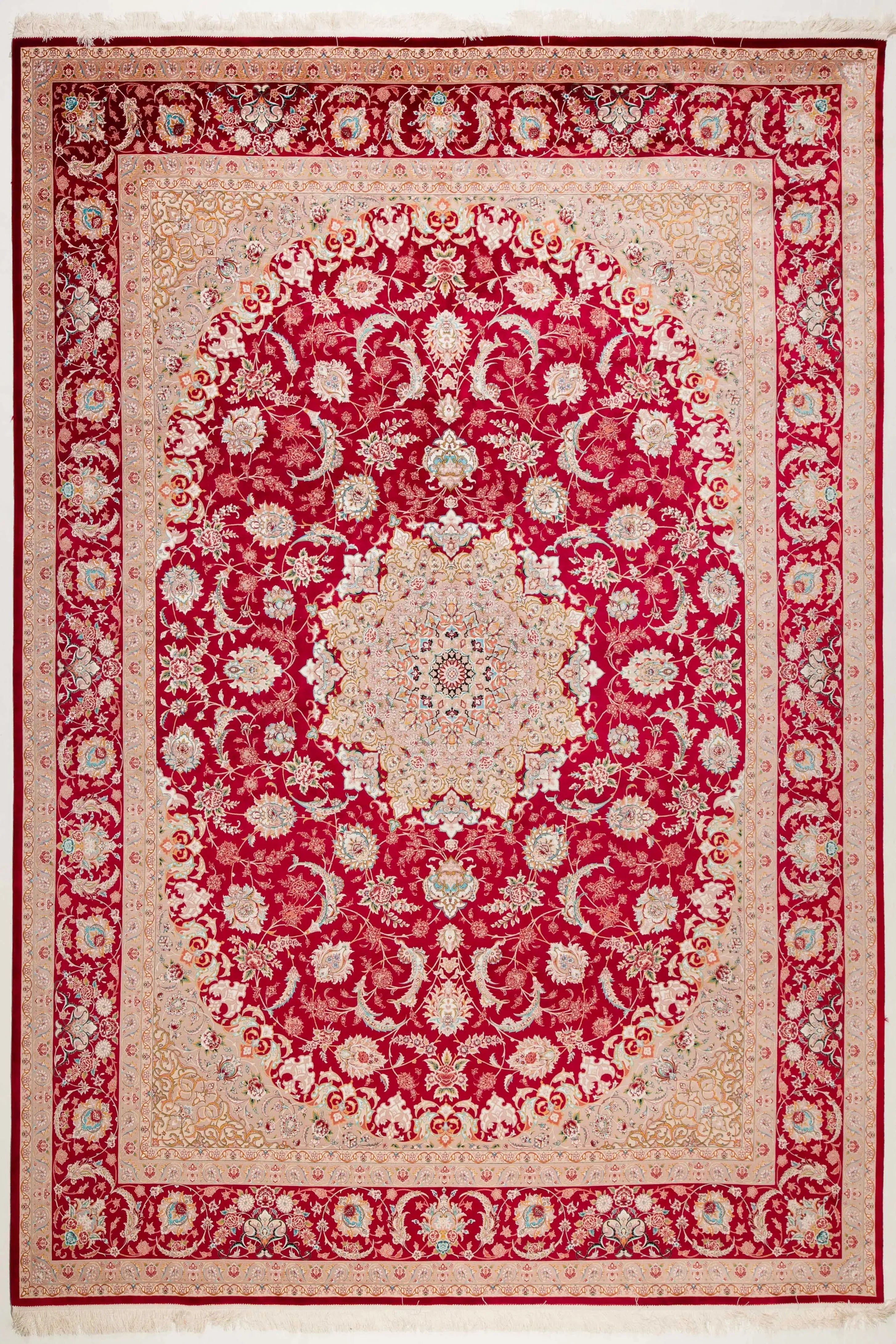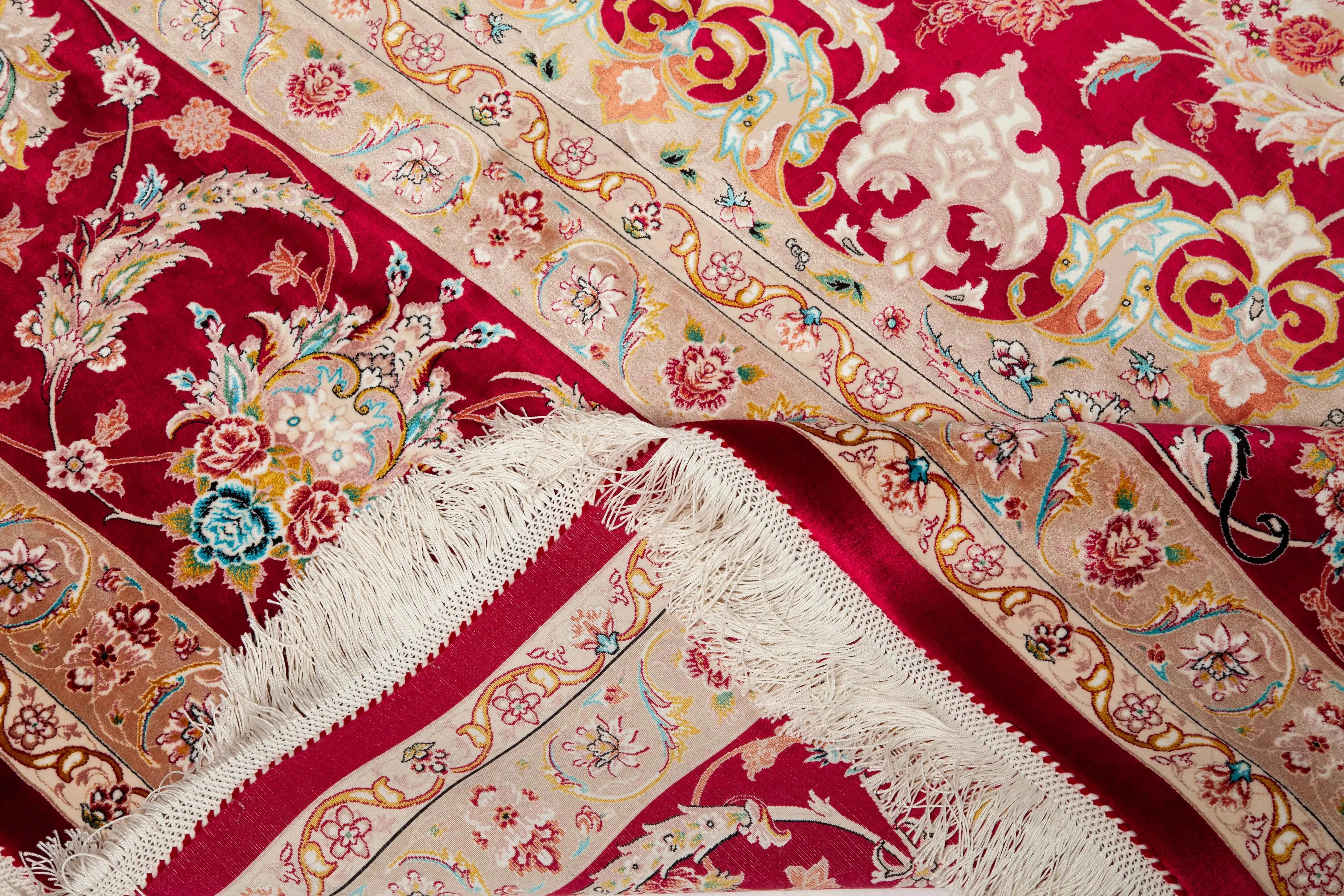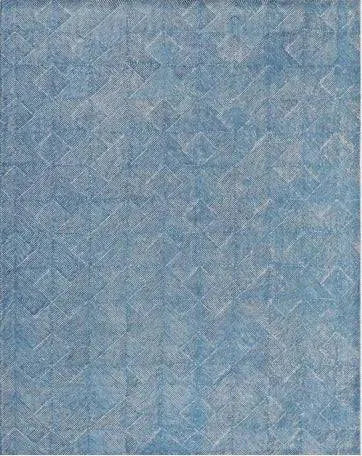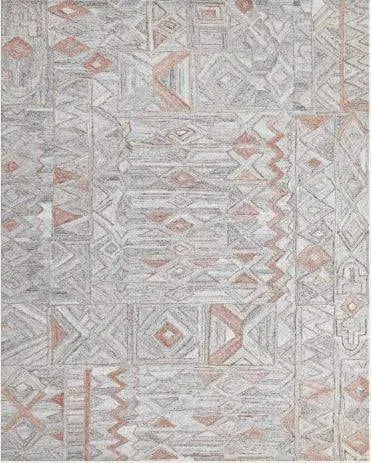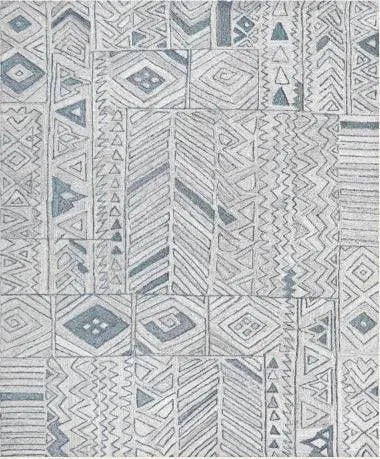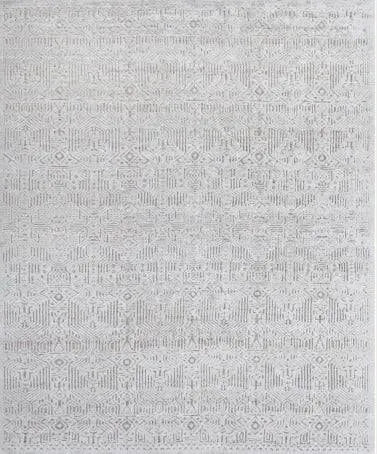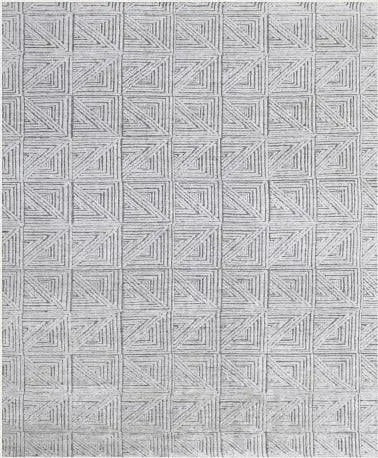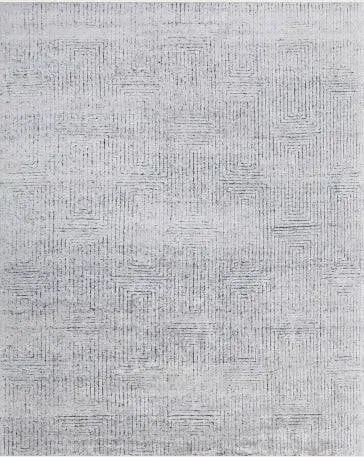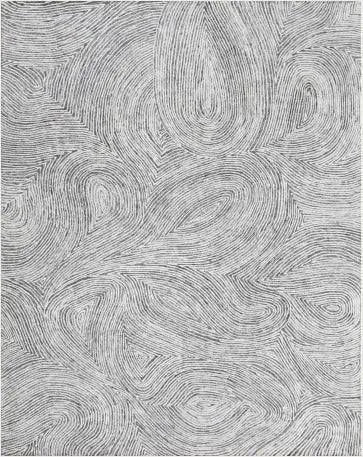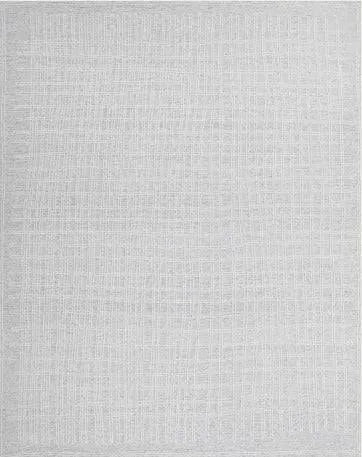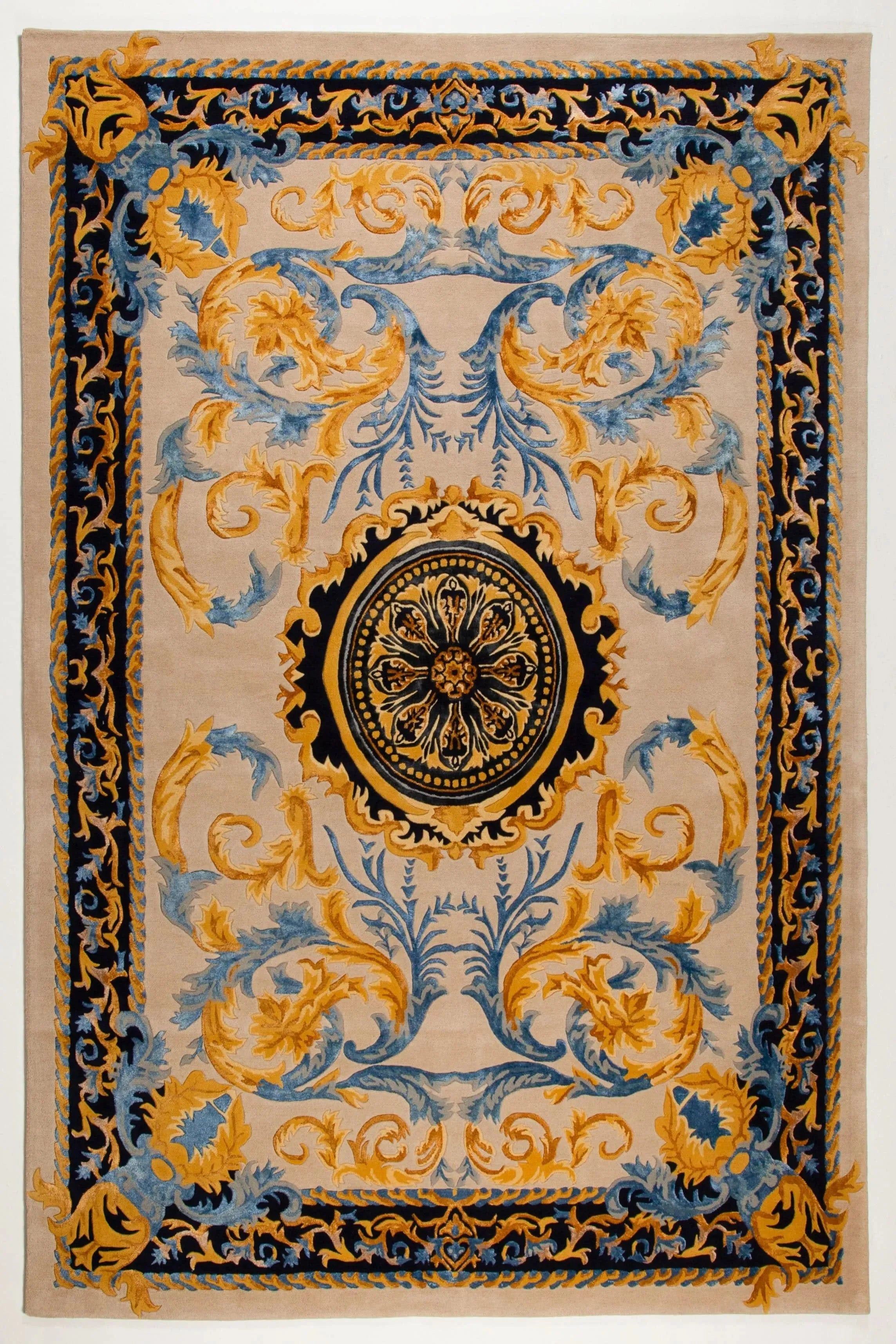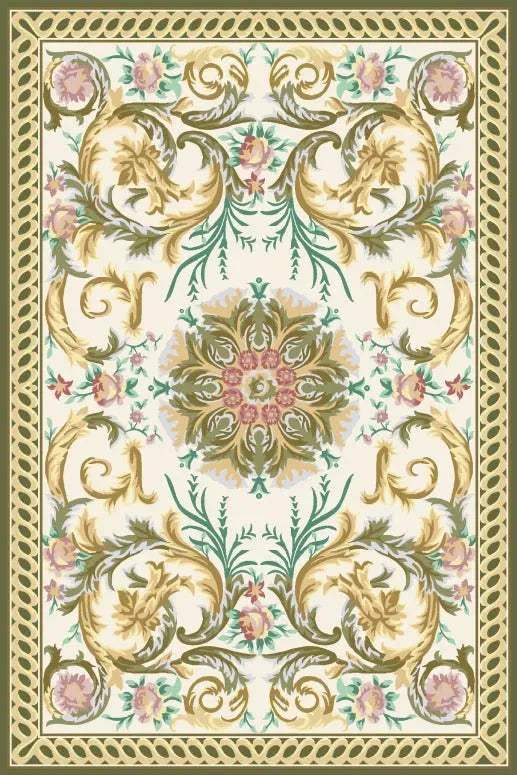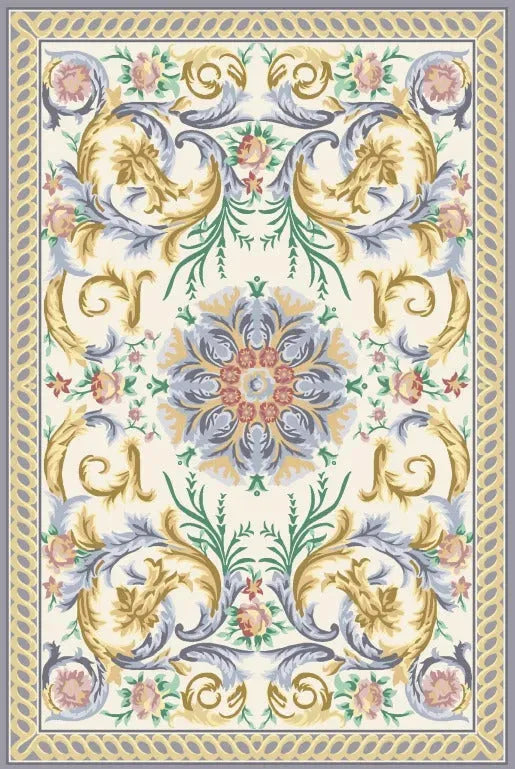Shop by Collection
Season Special ✨
Classic Hand Tufted Carpets and Rugs
21 items
Classic Carpets and Rugs Online
38 items
Customized Carpets and Rugs
6 items
Hand Tufted Carpets and Rugs Online
44 items
Modern Machine-Made Carpets & Rugs
25 items
Luxury Silk Carpets and Rugs
6 items
Hand-Tufted
Season Special Extra 10% discount✨
Zennova Carpet : PERSIAN COLOR BROWN : Classic Hand Tufted
Regular price
Dhs. 12,980.00 AED
Sale price
Dhs. 11,682.00 AED
Zennova Carpet : TAJ COLOR WHITE : Classic Hand Tufted
Regular price
Dhs. 7,490.00 AED
Sale price
From Dhs. 6,741.00 AED
Zennova Carpet : ABUSHAN COLOR YELLOW : Classic Hand Tufted
Regular price
Dhs. 7,290.00 AED
Sale price
From Dhs. 6,561.00 AED
Zennova Carpet : PARIS BEAUTY : Classic Hand Tufted
Regular price
Dhs. 7,690.00 AED
Sale price
From Dhs. 6,921.00 AED
Zennova Carpet : ERA COLOR GOLDEN : Classic Hand Tufted
Regular price
Dhs. 7,490.00 AED
Sale price
From Dhs. 6,741.00 AED
Zennova Carpet : CORAL-2 : Classic Hand Tufted
Regular price
Dhs. 7,890.00 AED
Sale price
Dhs. 7,101.00 AED
Zennova Carpet : FLORAL COLOR CREAM : Classic Hand Tufted
Regular price
Dhs. 9,890.00 AED
Sale price
Dhs. 8,901.00 AED
Zennova Carpet : MEGA COLOR BLUE
Regular price
Dhs. 12,890.00 AED
Sale price
From Dhs. 2,490.00 AED
Silk Hand Made
Season Special Extra 10% discount✨
Zennova Carpet : Red Classic : Silk Carpet
Regular price
Dhs. 13,900.00 AED
Sale price
From Dhs. 12,510.00 AED
Zennova Carpet : ISF 22-07643 Color Beige : Silk
Regular price
Dhs. 12,000.00 AED
Sale price
Dhs. 10,800.00 AED
Zennova Carpet : 1002 : Silk
Regular price
Dhs. 6,190.00 AED
Sale price
Dhs. 5,571.00 AED
Zennova Carpet : 23-11142 Color UN : Silk
Regular price
Dhs. 13,200.00 AED
Sale price
From Dhs. 11,880.00 AED
Zennova Carpet : AB23-17709 Silk Color UN 3x4 : Silk
Regular price
Dhs. 13,200.00 AED
Sale price
Dhs. 11,880.00 AED
Zennova Carpet : ARGHAWANI : Silk
Regular price
Dhs. 5,850.00 AED
Sale price
Dhs. 5,265.00 AED
Modern Hand-Tufted
Season Special Extra 10% discount✨
Zennova Carpet : ARONIA-03 : Modern Hand Tufted
Regular price
Dhs. 2,490.00 AED
Sale price
Dhs. 2,241.00 AED
Zennova Carpet : DSY 06 : Modern Hand Tufted
Regular price
Dhs. 2,490.00 AED
Sale price
Dhs. 2,241.00 AED
Zennova Carpet : DSY 07 : Modern Hand Tufted
Regular price
Dhs. 7,890.00 AED
Sale price
Dhs. 7,101.00 AED
Zennova Carpet : HKN 01 : Modern Hand Tufted
Regular price
Dhs. 7,890.00 AED
Sale price
Dhs. 7,101.00 AED
Zennova Carpet : HKN 04 : Modern Hand Tufted
Regular price
Dhs. 7,790.00 AED
Sale price
Dhs. 7,011.00 AED
Zennova Carpet : HKN 10 : Modern Hand Tufted
Regular price
Dhs. 7,890.00 AED
Sale price
Dhs. 7,101.00 AED
Zennova Carpet : HTN 05 : Modern Hand Tufted
Regular price
Dhs. 2,790.00 AED
Sale price
Dhs. 2,511.00 AED
Zennova Carpet : HOB 01 : Modern Hand Tufted
Regular price
Dhs. 1,790.00 AED
Sale price
Dhs. 1,611.00 AED
Faraz ali Shaikh
5 days ago
Powered by

Verified
Faraz ali Shaikh
5 days ago
Apigos
4 weeks ago
Powered by

Verified
Excellent selection, expert guidance, and impeccable installation. The team at Zennova Carpet Shop made the entire process stress-free and delivered a high-quality product. A highly professional and trustworthy company.
Show more
Apigos
4 weeks ago
Aziz Sadat
4 weeks ago
Powered by

Verified
A top-tier carpet shopping experience! The staff was courteous and well-informed, offering expert guidance. The product quality exceeded my expectations, and installation was flawless. Would definitely recommend to anyone in need of premium carpets.
Show more
Aziz Sadat
4 weeks ago
Niyaz Hussain
4 weeks ago
Powered by

Verified
Exceptional craftsmanship and service! The team at Zennova Carpet Shop provided a smooth and professional experience from consultation to installation. Their attention to detail and commitment to quality truly stand out. Highly recommend!
Show more
Niyaz Hussain
4 weeks ago
usman amazon
4 weeks ago
Powered by

Verified
Beautiful carpets and outstanding customer service! Highly recommend.
usman amazon
4 weeks ago
Agboola Julius
4 weeks ago
Powered by

Verified
Zennona Carpet Shop! Love my new carpet! Affordable, stylish, and expertly installed. Will shop here again.
Agboola Julius
4 weeks ago
Aslam Rafeeque
4 weeks ago
Powered by

Verified
Fantastic experience,Great prices, excellent service, and flawless installation. Highly recommend!
Aslam Rafeeque
4 weeks ago
Dana Deeb
4 weeks ago
Powered by

Verified
Great shop with a wide range of modern and classic carpets. So many beautiful designs, it’s hard to choose!
Dana Deeb
4 weeks ago
zennovahome jableali
4 weeks ago
Powered by

Verified
BEST PLACE TO VISIT AND BUY CARPETS AND MKAE CUSTOMIZED CARPETS ORDER SPECIALLY THEY MAKE VERY NICE.
zennovahome jableali
4 weeks ago
Samer Awajan
4 weeks ago
Powered by

Verified
Excellent service and best price! Thank you Abdul Baseer
Samer Awajan
4 weeks ago
Amjad
1 month ago
Powered by

Verified
I highly recommend all to come to this branch!
It is organized and the workers there are very friendly and helpful
Special thanks to bilal and waqar for their kindness and respect for my mom
We bought very nice and good carpet
Show more
Amjad
1 month ago
Reza Panahandeh
2 months ago
Powered by

Verified
Very good discount and very good quaity
Reza Panahandeh
2 months ago
محمد الشريف
2 months ago
Powered by

Verified
السعر مرتفع
محمد الشريف
2 months ago
mohammed alshamisi
2 months ago
Powered by

Verified
Very helpful and cooperative staff abdul baseer and he his kind
Really ahigh quality carpet
mohammed alshamisi
2 months ago
adeeb srouji
3 months ago
Powered by

Verified
adeeb srouji
3 months ago
Not Otep
3 months ago
Powered by

Verified
اشكر الموضفين على حسن التعامل واخص بالشكر عبدالبصير تحملني كثير ⭐️⭐️⭐️⭐️🫶🏻
Not Otep
3 months ago
Noura Mohammed1
3 months ago
Powered by

Verified
Abdul baseer 👍🏻👍🏻👍🏻👍🏻👍🏻👍🏻👍🏻
Noura Mohammed1
3 months ago
Khulood
3 months ago
Powered by

Verified
My family loves Zennova, we got all of our carpets from here! Special thanks to Miss Alaa for helping me out in choosing a nice piece. She made sure that it gets delivered within 2 days as promised! Such a sweet lady :)
Show more
Khulood
3 months ago
Najmeh Atabaki
3 months ago
Powered by

Verified
I buy one carpet from zennova very nice thank you Mostafa rezaei
Najmeh Atabaki
3 months ago
Reem Al Yahyaee
3 months ago
Powered by

Verified
Reem Al Yahyaee
3 months ago
Adel Sewelam
4 months ago
Powered by

Verified
amazing carpet with helpful sales staff specially Mrs ALAA she is very knowledgeable and give the best service
Adel Sewelam
4 months ago
Alaa Bakr
4 months ago
Powered by

Verified
Thank you Mr. Abdel Moneim for your help in choosing the carpet. Best price and quality
Alaa Bakr
4 months ago
Mostafa Mostafa
4 months ago
Powered by

Verified
Thanks for everything zennova Mostafa rezaei
Mostafa Mostafa
4 months ago
Aisha Al.mahrouqi
4 months ago
Powered by

Verified
I loved the way we’ve been treated .. abdul baseer helped us alot to decide which carpet to go on .. recommended as they deserve 5 stars
Aisha Al.mahrouqi
4 months ago
Bani Alkhurainej
1 year ago
Powered by

Verified
Bani Alkhurainej
1 year ago
Fooz Aldhabyani
1 year ago
Powered by

Verified
محل متميز لكن أسعاره غالية
Fooz Aldhabyani
1 year ago
Mohamed Alowais
1 year ago
Powered by

Verified
كنت رايح اشتري زوالي، وشفت دلة من الدلال المعروضه عجبتي بس رجعتها ورحت خذت السجاد فقط، وتفاجئت بعدين بمسؤول المحل الاخ رامز عطاني اياها هدية. شكراً
Mohamed Alowais
1 year ago
Zulekha Khalid
1 year ago
Powered by

Verified
الف شكر للموظف رامز ما قصر معانا المعامله ممتازة
Zulekha Khalid
1 year ago
Dalilak real estate LLC
1 year ago
Powered by

Verified
نشكر الاخ رامز على الخدمه المميزة والتعامل الراقي ونتمنى لكم المزيد من النجاح والتوفيق
Dalilak real estate LLC
1 year ago
أحمد عبيد (عشق الإمارات)
2 years ago
Powered by

Verified
بيت الاثاث والسجاد والثريات في الزاهيه سيتي سنتر ، عندهم شغلات جميله واسعار تنافسيه اشتريت عندهم ثريات بصراحه روعه ، وحبيت أشكر الموظف الخلوق عمرو على تعامله الراقي وايجابيته رغم انها كانت عندي مشكله ولكن باسلوبه وتعاونه انتهت المشكله باسرع وقت ومثل هذيلا الموظفين يستحقون الشكر 👍🏻👍🏻
Show more
أحمد عبيد (عشق الإمارات)
2 years ago
Mazin Yousif
2 years ago
Powered by

Verified
Mazin Yousif
2 years ago
wesam salem
2 years ago
Powered by

Verified
Lovely place and they have good offers
wesam salem
2 years ago
fatema Alkamali
2 years ago
Powered by

Verified
fatema Alkamali
2 years ago
Happy Boy
4 weeks ago
Powered by

Verified
Best place to visit amd see luxury carpets and also they are do customized
Happy Boy
4 weeks ago
Joud Baroudi
2 years ago
Powered by

Verified
في فرع الشارقة في مول الزاهية الموديلات والغراض بتجنن والاسعار رائعة والمدير رامز راعانا
Joud Baroudi
2 years ago
amna mohamed alowais
2 years ago
Powered by

Verified
I liked the shop very much and found what I was looking for. Mr. Ramez showed me the different types of carpets in terms of type and size, as he was very helpful.
amna mohamed alowais
2 years ago
RogerUAE 85
2 years ago
Powered by

Verified
تم التعامل مع الأخ رامز مدير المحل والصراحة قمة ف الاخلاق وما قصر
RogerUAE 85
2 years ago
Sara A
2 years ago
Powered by

Verified
اليوم زرت زينوفا الشارقة-الزاهية مول عندهم وايد خيارات للاثاث والسجاد تعامل الموظفين جدا راقي وبالاخص المدير/ رامز تعامله جدا راقي ساعدني في اختيار قياس السجاد الصحيح بناء عل قراءته لمخططات المجلس وساعدني في اختيار اللون اللي يناسب التصميم وكان استباقي في تقديم الخدمة سعيدة بالتعامل معاهم واكيد مش اخر تعاون
Show more
Sara A
2 years ago
Andrew Nabilson
2 years ago
Powered by

Verified
Amr and Farrah are the best team they will help you with anything and everything
Andrew Nabilson
2 years ago
Pal Raj
2 years ago
Powered by

Verified
Best carpet collection in the whole uae
Pal Raj
2 years ago
maria theresa bino
2 years ago
Powered by

Verified
2 thumbs up Zennova Home!!! Worth to visit
maria theresa bino
2 years ago
Faraz ali Shaikh
5 days ago
Powered by

Verified
Faraz ali Shaikh
5 days ago
Apigos
4 weeks ago
Powered by

Verified
Excellent selection, expert guidance, and impeccable installation. The team at Zennova Carpet Shop made the entire process stress-free and delivered a high-quality product. A highly professional and trustworthy company.
Show more
Apigos
4 weeks ago
Aziz Sadat
4 weeks ago
Powered by

Verified
A top-tier carpet shopping experience! The staff was courteous and well-informed, offering expert guidance. The product quality exceeded my expectations, and installation was flawless. Would definitely recommend to anyone in need of premium carpets.
Show more
Aziz Sadat
4 weeks ago
Niyaz Hussain
4 weeks ago
Powered by

Verified
Exceptional craftsmanship and service! The team at Zennova Carpet Shop provided a smooth and professional experience from consultation to installation. Their attention to detail and commitment to quality truly stand out. Highly recommend!
Show more
Niyaz Hussain
4 weeks ago
usman amazon
4 weeks ago
Powered by

Verified
Beautiful carpets and outstanding customer service! Highly recommend.
usman amazon
4 weeks ago
Agboola Julius
4 weeks ago
Powered by

Verified
Zennona Carpet Shop! Love my new carpet! Affordable, stylish, and expertly installed. Will shop here again.
Agboola Julius
4 weeks ago
Aslam Rafeeque
4 weeks ago
Powered by

Verified
Fantastic experience,Great prices, excellent service, and flawless installation. Highly recommend!
Aslam Rafeeque
4 weeks ago
Dana Deeb
4 weeks ago
Powered by

Verified
Great shop with a wide range of modern and classic carpets. So many beautiful designs, it’s hard to choose!
Dana Deeb
4 weeks ago
zennovahome jableali
4 weeks ago
Powered by

Verified
BEST PLACE TO VISIT AND BUY CARPETS AND MKAE CUSTOMIZED CARPETS ORDER SPECIALLY THEY MAKE VERY NICE.
zennovahome jableali
4 weeks ago
Samer Awajan
4 weeks ago
Powered by

Verified
Excellent service and best price! Thank you Abdul Baseer
Samer Awajan
4 weeks ago
Amjad
1 month ago
Powered by

Verified
I highly recommend all to come to this branch!
It is organized and the workers there are very friendly and helpful
Special thanks to bilal and waqar for their kindness and respect for my mom
We bought very nice and good carpet
Show more
Amjad
1 month ago
Reza Panahandeh
2 months ago
Powered by

Verified
Very good discount and very good quaity
Reza Panahandeh
2 months ago
محمد الشريف
2 months ago
Powered by

Verified
السعر مرتفع
محمد الشريف
2 months ago
mohammed alshamisi
2 months ago
Powered by

Verified
Very helpful and cooperative staff abdul baseer and he his kind
Really ahigh quality carpet
mohammed alshamisi
2 months ago
adeeb srouji
3 months ago
Powered by

Verified
adeeb srouji
3 months ago
Not Otep
3 months ago
Powered by

Verified
اشكر الموضفين على حسن التعامل واخص بالشكر عبدالبصير تحملني كثير ⭐️⭐️⭐️⭐️🫶🏻
Not Otep
3 months ago
Noura Mohammed1
3 months ago
Powered by

Verified
Abdul baseer 👍🏻👍🏻👍🏻👍🏻👍🏻👍🏻👍🏻
Noura Mohammed1
3 months ago
Khulood
3 months ago
Powered by

Verified
My family loves Zennova, we got all of our carpets from here! Special thanks to Miss Alaa for helping me out in choosing a nice piece. She made sure that it gets delivered within 2 days as promised! Such a sweet lady :)
Show more
Khulood
3 months ago
Najmeh Atabaki
3 months ago
Powered by

Verified
I buy one carpet from zennova very nice thank you Mostafa rezaei
Najmeh Atabaki
3 months ago
Reem Al Yahyaee
3 months ago
Powered by

Verified
Reem Al Yahyaee
3 months ago
Adel Sewelam
4 months ago
Powered by

Verified
amazing carpet with helpful sales staff specially Mrs ALAA she is very knowledgeable and give the best service
Adel Sewelam
4 months ago
Alaa Bakr
4 months ago
Powered by

Verified
Thank you Mr. Abdel Moneim for your help in choosing the carpet. Best price and quality
Alaa Bakr
4 months ago
Mostafa Mostafa
4 months ago
Powered by

Verified
Thanks for everything zennova Mostafa rezaei
Mostafa Mostafa
4 months ago
Aisha Al.mahrouqi
4 months ago
Powered by

Verified
I loved the way we’ve been treated .. abdul baseer helped us alot to decide which carpet to go on .. recommended as they deserve 5 stars
Aisha Al.mahrouqi
4 months ago
Bani Alkhurainej
1 year ago
Powered by

Verified
Bani Alkhurainej
1 year ago
Fooz Aldhabyani
1 year ago
Powered by

Verified
محل متميز لكن أسعاره غالية
Fooz Aldhabyani
1 year ago
Mohamed Alowais
1 year ago
Powered by

Verified
كنت رايح اشتري زوالي، وشفت دلة من الدلال المعروضه عجبتي بس رجعتها ورحت خذت السجاد فقط، وتفاجئت بعدين بمسؤول المحل الاخ رامز عطاني اياها هدية. شكراً
Mohamed Alowais
1 year ago
Zulekha Khalid
1 year ago
Powered by

Verified
الف شكر للموظف رامز ما قصر معانا المعامله ممتازة
Zulekha Khalid
1 year ago
Dalilak real estate LLC
1 year ago
Powered by

Verified
نشكر الاخ رامز على الخدمه المميزة والتعامل الراقي ونتمنى لكم المزيد من النجاح والتوفيق
Dalilak real estate LLC
1 year ago
أحمد عبيد (عشق الإمارات)
2 years ago
Powered by

Verified
بيت الاثاث والسجاد والثريات في الزاهيه سيتي سنتر ، عندهم شغلات جميله واسعار تنافسيه اشتريت عندهم ثريات بصراحه روعه ، وحبيت أشكر الموظف الخلوق عمرو على تعامله الراقي وايجابيته رغم انها كانت عندي مشكله ولكن باسلوبه وتعاونه انتهت المشكله باسرع وقت ومثل هذيلا الموظفين يستحقون الشكر 👍🏻👍🏻
أحمد عبيد (عشق الإمارات)
2 years ago
Mazin Yousif
2 years ago
Powered by

Verified
Mazin Yousif
2 years ago
wesam salem
2 years ago
Powered by

Verified
Lovely place and they have good offers
wesam salem
2 years ago
fatema Alkamali
2 years ago
Powered by

Verified
fatema Alkamali
2 years ago
Happy Boy
4 weeks ago
Powered by

Verified
Best place to visit amd see luxury carpets and also they are do customized
Happy Boy
4 weeks ago
Joud Baroudi
2 years ago
Powered by

Verified
في فرع الشارقة في مول الزاهية الموديلات والغراض بتجنن والاسعار رائعة والمدير رامز راعانا
Joud Baroudi
2 years ago
amna mohamed alowais
2 years ago
Powered by

Verified
I liked the shop very much and found what I was looking for. Mr. Ramez showed me the different types of carpets in terms of type and size, as he was very helpful.
amna mohamed alowais
2 years ago
RogerUAE 85
2 years ago
Powered by

Verified
تم التعامل مع الأخ رامز مدير المحل والصراحة قمة ف الاخلاق وما قصر
RogerUAE 85
2 years ago
Sara A
2 years ago
Powered by

Verified
اليوم زرت زينوفا الشارقة-الزاهية مول عندهم وايد خيارات للاثاث والسجاد تعامل الموظفين جدا راقي وبالاخص المدير/ رامز تعامله جدا راقي ساعدني في اختيار قياس السجاد الصحيح بناء عل قراءته لمخططات المجلس وساعدني في اختيار اللون اللي يناسب التصميم وكان استباقي في تقديم الخدمة سعيدة بالتعامل معاهم واكيد مش اخر تعاون
Sara A
2 years ago
Andrew Nabilson
2 years ago
Powered by

Verified
Amr and Farrah are the best team they will help you with anything and everything
Andrew Nabilson
2 years ago
Pal Raj
2 years ago
Powered by

Verified
Best carpet collection in the whole uae
Pal Raj
2 years ago
maria theresa bino
2 years ago
Powered by

Verified
2 thumbs up Zennova Home!!! Worth to visit
maria theresa bino
2 years ago
nona alameri
2 weeks ago
Powered by

Verified
Very nice pieces of carpets
And the most thing I like the way they treat the costumer
We deal with abdalbaseer thanks for ur patient with us to choose what we need
nona alameri
2 weeks ago
Ashraf Ashraf
4 weeks ago
Powered by

Verified
Exceptional service and high-quality carpets at competitive prices. The staff was knowledgeable and provided excellent recommendations based on my needs. The entire process, from selection to installation, was seamless and professional. I highly recommend Zennova Carpet Shop for anyone looking for premium flooring solutions.
Ashraf Ashraf
4 weeks ago
Said agha sadat
4 weeks ago
Powered by

Verified
Superior customer service and an excellent range of carpets. The staff was knowledgeable and provided valuable insights, making the selection process easy. Installation was timely and well-executed. Highly recommended for quality and professionalism.
Said agha sadat
4 weeks ago
Isaac Senyonjo
4 weeks ago
Powered by

Verified
If look for better services in terms of good both quality and quantity
Zennova Carpet is the right company
Trust them you wont regret
Isaac Senyonjo
4 weeks ago
Md Moyon
4 weeks ago
Powered by

Verified
Highly recommend! Great prices, friendly staff, and a beautiful range of carpets to choose from.
Md Moyon
4 weeks ago
raji ibrahim
4 weeks ago
Powered by

Verified
I had an excellent experience at Zenmova Carpet Shop! They have a fantastic selection of high-quality carpets at great prices. The staff was incredibly helpful, knowledgeable, and patient, guiding me to find the perfect match for my home. The installation was seamless, and the results exceeded my expectations. Highly recommend for anyone looking for beautiful and durable carpets!
raji ibrahim
4 weeks ago
Ghina Merheb
4 weeks ago
Powered by

Verified
A must-visit for top-quality carpets! Great selection, fair prices, and excellent service.
Ghina Merheb
4 weeks ago
ZENNOVA HOME
4 weeks ago
Powered by

Verified
Best place to visit and check varieties of carpets and also you can make any size any design customized
ZENNOVA HOME
4 weeks ago
Saood Barakat
4 weeks ago
Powered by

Verified
Abdul baseer is excellent sealsmen and very welcoming
Saood Barakat
4 weeks ago
hadilhin
1 month ago
Powered by

Verified
الصراحة ١٠/١٠ احلى زوالي والله
Honestly 10/10 experience, all the carpets are so beautiful I wanted to buy all of them!! Thank you abdulbaseer, you’ve been a great help!
hadilhin
1 month ago
waheeda albalooshi
1 month ago
Powered by

Verified
عبدالبصير، التعامل معاه ممتاز وسهل
waheeda albalooshi
1 month ago
Hamda Aljunaibi
2 months ago
Powered by

Verified
عبدالعزيز و مصطفى افضل خصم و سجاد ممتاز
Hamda Aljunaibi
2 months ago
sarro sh
2 months ago
Powered by

Verified
Good service from Abdul Raseer
sarro sh
2 months ago
Waleed fathei
2 months ago
Powered by

Verified
Abdul baseer was very helpful and cooperative in showing all carpets options available at the shop. Much appreciated
Waleed fathei
2 months ago
Naeem Sheikh
3 months ago
Powered by

Verified
Great variety, reasonable price and Polite Management and staff
Naeem Sheikh
3 months ago
Abdillahi moussa Ibrahim
3 months ago
Powered by

Verified
Good price and good quality
Thank you abdolmalek
Abdillahi moussa Ibrahim
3 months ago
Ahmed sabry
3 months ago
Powered by

Verified
المكان ماشاء الله وموديلات السجاد المتوفره ممتازة جدا ومعاملة الأخ عبد المنعم خلال التواجد فالمكان وحتي استلام السجاد كانت في منتهي الإحترام والرقي 🙏🏻
Ahmed sabry
3 months ago
مسلم العامري
3 months ago
Powered by

Verified
شكرا عبدالبصير.. نفر زين
مسلم العامري
3 months ago
Roya Dallamy
3 months ago
Powered by

Verified
Abdul Baseer - great service
Roya Dallamy
3 months ago
Hessa AlZaabi
3 months ago
Powered by

Verified
“Thank you for the shopping experience and the kind assistance from the employee, Ala’a.”
Hessa AlZaabi
3 months ago
Hany Elkady
4 months ago
Powered by

Verified
Abdul Baseer was very helpful and gave me a great experience and the best carpet for me
Hany Elkady
4 months ago
Bassem Ahmad
4 months ago
Powered by

Verified
شكراً أختي آلاء على مساعدتك في اختيار السجادة . السجادة جميلة جداً والسعر ممتاز
Bassem Ahmad
4 months ago
سعيد. محمد
4 months ago
Powered by

Verified
اسعار حلوه وتعامل راقي
سعيد. محمد
4 months ago
Moudi Al Ateek
10 months ago
Powered by

Verified
Moudi Al Ateek
10 months ago
Ali Musawy
1 year ago
Powered by

Verified
بضاعة مميزة و مراعاة للزبون ممتازة و حصلنا على هداية قيمة أنصحكم بالتعامل معهم
Ali Musawy
1 year ago
Ahmed Alsuwaidi
1 year ago
Powered by

Verified
نشكر الاخ رامز على تعاونه وحسن التعامل معنا والى التوفيق الدائم لكم لحسن اختيار موظفين متعاونين مع الزبائن
Ahmed Alsuwaidi
1 year ago
Rashid Almarzooqi
1 year ago
Powered by

Verified
Professional treatment and very helpful staff
Especially Mr. Ramez Hannawi..
He was very very professional and very very polite and helpful
He gave me all the details about the carpets
And gave me suggestions too
Thank you Mr. Ramez
Rashid Almarzooqi
1 year ago
ام سيف الحمومي
1 year ago
Powered by

Verified
واايد حلوه اغراضهم وراقيه و تعاملهم مع الزبائن جدا جميل فرع الزاهيه 👌
ام سيف الحمومي
1 year ago
Entisar Essa
1 year ago
Powered by

Verified
تجربة جدا رائعة لوجود شخصية احترافيه في المبيعات مثل الاستاذ رامز ..شكرا ولكم التقدير والاحترام
Entisar Essa
1 year ago
amal khalifa
2 years ago
Powered by

Verified
amal khalifa
2 years ago
Aftab khan
2 years ago
Powered by

Verified
Nice place to get nice carpet and furniture like luxury style.
Aftab khan
2 years ago
Eng.Rashid Alnuaimi
2 years ago
Powered by

Verified
Eng.Rashid Alnuaimi
2 years ago
Badoor Alkhaja
2 years ago
Powered by

Verified
التعامل جدا راقي والاخ رامز ابدا ما قصر معانا متعاون وينصح بالافضل وشرح وافي للمنتج وانصح الكل يزور المحل ...
Badoor Alkhaja
2 years ago
samah albaghdadi
2 years ago
Powered by

Verified
البارحة اشتريت سجادة من فرعهم الذي بالزاهية سيتي سنتر وكانت المعاملة رائعة والسعر مناسب و الخامة ممتازة
samah albaghdadi
2 years ago
Heba Ba-Ra
2 years ago
Powered by

Verified
Heba Ba-Ra
2 years ago
ramiz Henawi
2 years ago
Powered by

Verified
رضا الناس غاية لا تدرك ورضا الله غاية لا تترك
فاترك مالااا يدرك وأدرك مالااا يترك.
ramiz Henawi
2 years ago
Bayan Hamwi
2 years ago
Powered by

Verified
ماشاء الله فخامه التصميم والاناقه
اسلوب الموظفين في فرع الشارجه راقي ومتعاونين المدير رامز ساعدني في اختيار السجاد للصاله عندي وكانت النتيجه جدا مرضيه سعيده بالتعامل معهم
Bayan Hamwi
2 years ago
Abdullah Awchi
2 years ago
Powered by

Verified
Great customer service and support. Lovely place to buy carpets from. Mr. Amr was very helpful, as well as his assistants.
Abdullah Awchi
2 years ago
Emad Seelawi
2 years ago
Powered by

Verified
ما شاء الله تبارك لديهم مدير معرض اسمه نبيل كله ذوق والله مدرسة بالتعامل البضاعة اللي عندهم اشهد بالله انها في غاية الروعة سواء نوعية السجاد الإيراني والأدوات المنزلية الراقية.. مدحي هذا الشهادة بالله ليس ترويج لهم أو من هذا القبيل لكن حسن التعامل من قبل الأخ نبيل اجبرني اني احط هال review
Emad Seelawi
2 years ago
Zohaib Nasir
2 years ago
Powered by

Verified
Happy to be your customer
Thank you Muhammad
Zohaib Nasir
2 years ago
Jayaprakash K
4 weeks ago
Powered by

Verified
One of the best carpet shop
Jayaprakash K
4 weeks ago
nona alameri
2 weeks ago
Powered by

Verified
Very nice pieces of carpets
And the most thing I like the way they treat the costumer
We deal with abdalbaseer thanks for ur patient with us to choose what we need
nona alameri
2 weeks ago
Ashraf Ashraf
4 weeks ago
Powered by

Verified
Exceptional service and high-quality carpets at competitive prices. The staff was knowledgeable and provided excellent recommendations based on my needs. The entire process, from selection to installation, was seamless and professional. I highly recommend Zennova Carpet Shop for anyone looking for premium flooring solutions.
Ashraf Ashraf
4 weeks ago
Said agha sadat
4 weeks ago
Powered by

Verified
Superior customer service and an excellent range of carpets. The staff was knowledgeable and provided valuable insights, making the selection process easy. Installation was timely and well-executed. Highly recommended for quality and professionalism.
Said agha sadat
4 weeks ago
Isaac Senyonjo
4 weeks ago
Powered by

Verified
If look for better services in terms of good both quality and quantity
Zennova Carpet is the right company
Trust them you wont regret
Isaac Senyonjo
4 weeks ago
Md Moyon
4 weeks ago
Powered by

Verified
Highly recommend! Great prices, friendly staff, and a beautiful range of carpets to choose from.
Md Moyon
4 weeks ago
raji ibrahim
4 weeks ago
Powered by

Verified
I had an excellent experience at Zenmova Carpet Shop! They have a fantastic selection of high-quality carpets at great prices. The staff was incredibly helpful, knowledgeable, and patient, guiding me to find the perfect match for my home. The installation was seamless, and the results exceeded my expectations. Highly recommend for anyone looking for beautiful and durable carpets!
raji ibrahim
4 weeks ago
Ghina Merheb
4 weeks ago
Powered by

Verified
A must-visit for top-quality carpets! Great selection, fair prices, and excellent service.
Ghina Merheb
4 weeks ago
ZENNOVA HOME
4 weeks ago
Powered by

Verified
Best place to visit and check varieties of carpets and also you can make any size any design customized
ZENNOVA HOME
4 weeks ago
Saood Barakat
4 weeks ago
Powered by

Verified
Abdul baseer is excellent sealsmen and very welcoming
Saood Barakat
4 weeks ago
hadilhin
1 month ago
Powered by

Verified
الصراحة ١٠/١٠ احلى زوالي والله
Honestly 10/10 experience, all the carpets are so beautiful I wanted to buy all of them!! Thank you abdulbaseer, you’ve been a great help!
hadilhin
1 month ago
waheeda albalooshi
1 month ago
Powered by

Verified
عبدالبصير، التعامل معاه ممتاز وسهل
waheeda albalooshi
1 month ago
Hamda Aljunaibi
2 months ago
Powered by

Verified
عبدالعزيز و مصطفى افضل خصم و سجاد ممتاز
Hamda Aljunaibi
2 months ago
sarro sh
2 months ago
Powered by

Verified
Good service from Abdul Raseer
sarro sh
2 months ago
Waleed fathei
2 months ago
Powered by

Verified
Abdul baseer was very helpful and cooperative in showing all carpets options available at the shop. Much appreciated
Waleed fathei
2 months ago
Naeem Sheikh
3 months ago
Powered by

Verified
Great variety, reasonable price and Polite Management and staff
Naeem Sheikh
3 months ago
Abdillahi moussa Ibrahim
3 months ago
Powered by

Verified
Good price and good quality
Thank you abdolmalek
Abdillahi moussa Ibrahim
3 months ago
Ahmed sabry
3 months ago
Powered by

Verified
المكان ماشاء الله وموديلات السجاد المتوفره ممتازة جدا ومعاملة الأخ عبد المنعم خلال التواجد فالمكان وحتي استلام السجاد كانت في منتهي الإحترام والرقي 🙏🏻
Ahmed sabry
3 months ago
مسلم العامري
3 months ago
Powered by

Verified
شكرا عبدالبصير.. نفر زين
مسلم العامري
3 months ago
Roya Dallamy
3 months ago
Powered by

Verified
Abdul Baseer - great service
Roya Dallamy
3 months ago
Hessa AlZaabi
3 months ago
Powered by

Verified
“Thank you for the shopping experience and the kind assistance from the employee, Ala’a.”
Hessa AlZaabi
3 months ago
Hany Elkady
4 months ago
Powered by

Verified
Abdul Baseer was very helpful and gave me a great experience and the best carpet for me
Hany Elkady
4 months ago
Bassem Ahmad
4 months ago
Powered by

Verified
شكراً أختي آلاء على مساعدتك في اختيار السجادة . السجادة جميلة جداً والسعر ممتاز
Bassem Ahmad
4 months ago
سعيد. محمد
4 months ago
Powered by

Verified
اسعار حلوه وتعامل راقي
سعيد. محمد
4 months ago
Moudi Al Ateek
10 months ago
Powered by

Verified
Moudi Al Ateek
10 months ago
Ali Musawy
1 year ago
Powered by

Verified
بضاعة مميزة و مراعاة للزبون ممتازة و حصلنا على هداية قيمة أنصحكم بالتعامل معهم
Ali Musawy
1 year ago
Ahmed Alsuwaidi
1 year ago
Powered by

Verified
نشكر الاخ رامز على تعاونه وحسن التعامل معنا والى التوفيق الدائم لكم لحسن اختيار موظفين متعاونين مع الزبائن
Ahmed Alsuwaidi
1 year ago
Rashid Almarzooqi
1 year ago
Powered by

Verified
Professional treatment and very helpful staff
Especially Mr. Ramez Hannawi..
He was very very professional and very very polite and helpful
He gave me all the details about the carpets
And gave me suggestions too
Thank you Mr. Ramez
Rashid Almarzooqi
1 year ago
ام سيف الحمومي
1 year ago
Powered by

Verified
واايد حلوه اغراضهم وراقيه و تعاملهم مع الزبائن جدا جميل فرع الزاهيه 👌
ام سيف الحمومي
1 year ago
Entisar Essa
1 year ago
Powered by

Verified
تجربة جدا رائعة لوجود شخصية احترافيه في المبيعات مثل الاستاذ رامز ..شكرا ولكم التقدير والاحترام
Entisar Essa
1 year ago
amal khalifa
2 years ago
Powered by

Verified
amal khalifa
2 years ago
Aftab khan
2 years ago
Powered by

Verified
Nice place to get nice carpet and furniture like luxury style.
Aftab khan
2 years ago
Eng.Rashid Alnuaimi
2 years ago
Powered by

Verified
Eng.Rashid Alnuaimi
2 years ago
Badoor Alkhaja
2 years ago
Powered by

Verified
التعامل جدا راقي والاخ رامز ابدا ما قصر معانا متعاون وينصح بالافضل وشرح وافي للمنتج وانصح الكل يزور المحل ...
Badoor Alkhaja
2 years ago
samah albaghdadi
2 years ago
Powered by

Verified
البارحة اشتريت سجادة من فرعهم الذي بالزاهية سيتي سنتر وكانت المعاملة رائعة والسعر مناسب و الخامة ممتازة
samah albaghdadi
2 years ago
Heba Ba-Ra
2 years ago
Powered by

Verified
Heba Ba-Ra
2 years ago
ramiz Henawi
2 years ago
Powered by

Verified
رضا الناس غاية لا تدرك ورضا الله غاية لا تترك
فاترك مالااا يدرك وأدرك مالااا يترك.
ramiz Henawi
2 years ago
Bayan Hamwi
2 years ago
Powered by

Verified
ماشاء الله فخامه التصميم والاناقه
اسلوب الموظفين في فرع الشارجه راقي ومتعاونين المدير رامز ساعدني في اختيار السجاد للصاله عندي وكانت النتيجه جدا مرضيه سعيده بالتعامل معهم
Bayan Hamwi
2 years ago
Abdullah Awchi
2 years ago
Powered by

Verified
Great customer service and support. Lovely place to buy carpets from. Mr. Amr was very helpful, as well as his assistants.
Abdullah Awchi
2 years ago
Emad Seelawi
2 years ago
Powered by

Verified
ما شاء الله تبارك لديهم مدير معرض اسمه نبيل كله ذوق والله مدرسة بالتعامل البضاعة اللي عندهم اشهد بالله انها في غاية الروعة سواء نوعية السجاد الإيراني والأدوات المنزلية الراقية.. مدحي هذا الشهادة بالله ليس ترويج لهم أو من هذا القبيل لكن حسن التعامل من قبل الأخ نبيل اجبرني اني احط هال review
Emad Seelawi
2 years ago
Zohaib Nasir
2 years ago
Powered by

Verified
Happy to be your customer
Thank you Muhammad
Zohaib Nasir
2 years ago
Jayaprakash K
4 weeks ago
Powered by

Verified
One of the best carpet shop
Jayaprakash K
4 weeks ago

LUXURY Collection
Deal end in :
Abushan Wool Luxury Collection
Shop our luxury Abushan Rugs made with ultra-strong and Duty Wool
Blogs post
Explore professional recommendations for caring for your rugs and carpets in all seasons









